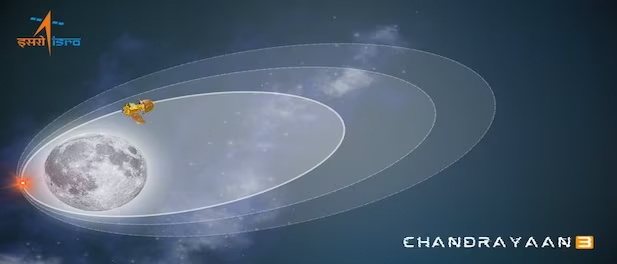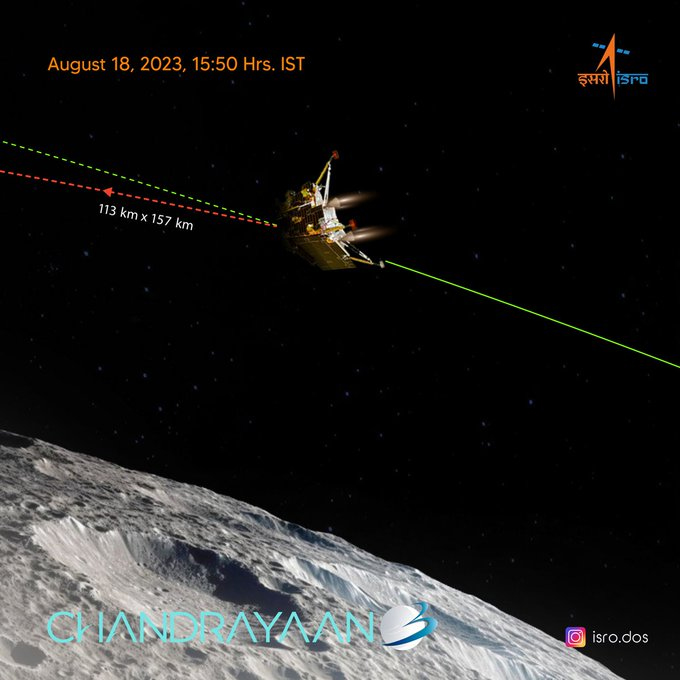Chandrayaan-3 Lander inches closer to Moon, Key De-Boosting Aanoeuvre A Success
- Chandrayaan-3’s Vikram Lander slowed down to enter a slightly lower orbit around the Moon this afternoon, in first of its two ‘de-boosting’ operations
Bangalore, August 18. Chandrayaan 3 is just days away from its final destination, the moon. India inched closer to its lunar dreams today with its ambitious Chandrayaan-3 mission successfully completing a key manoeuvre ahead of its landing of the Moon’s surface on August 23.

The spacecraft’s Vikram Lander slowed down to enter a slightly lower orbit around the Moon this afternoon, in first of its two ‘deboosting’ operations.
Indian Space Research Organisation (ISRO), the country’s space agency, shared the update and said the lander’s health is normal.
“The Lander Module (LM) health is normal. LM successfully underwent a deboosting operation that reduced its orbit to 113 km x 157 km.
The second deboosting operation is scheduled for August 20, 2023, around 0200 Hrs. IST,” the ISRO said on X, formerly Twitter.
The lander enters an automation mode once de-boosting begins and based on data it will decide on its own how to go about its functions.

The lander is the same one used in the previous Chandrayaan-2 mission. There is no change in design. Based on observations from Chandrayaan-2, all errors that took place in the mission have been corrected.
A successful landing on Moon will make India the historic fourth country to have achieved this feat.
A day earlier, the lander module separated from the propulsion module that had carried it all the way from the Earth – with a goodbye message “thanks for the ride, mate”.
The propulsion module will now continue orbiting Earth for months or even years, and study its atmosphere and measure the polarisation of light from Earth’s clouds.
Following the detachment, the lander shared its first images of the moon today.
Vikram Lander will slow down once again on Sunday to place itself in an orbit where the closest point to the Moon is 30 km and the farthest is 100 km. From this orbit, it will attempt soft landing in the unexplored south polar region of the Moon on August 23, ISRO has said.
Once on the Moon, the lander Vikram will photograph the Pragyaan rover and vice versa.
The rover will study the chemical makeup of the moon’s surface and search for water. It will have a life span of one lunar day, which is equivalent to 14 days on Earth.
Chandrayaan-3 was launched into space by the LVM3 rocket from the Satish Dhawan Space Centre in Sriharikota on July 14 and entered the lunar orbit on August 5.
The successful lunar mission by India will help enhance life on earth, while also enabling it to explore the rest of the solar system and beyond.
Historically, spacecraft missions to moon have primarily targeted the equatorial region due to its favourable terrain and operating conditions. However, the lunar south-pole presents a vastly different and challenging terrain compared to its equatorial region.
Meanwhile, ISRO on Friday released images of the moon as captured by the position detection camera attached to Vikram lander, right after its separation from the propulsion module.





